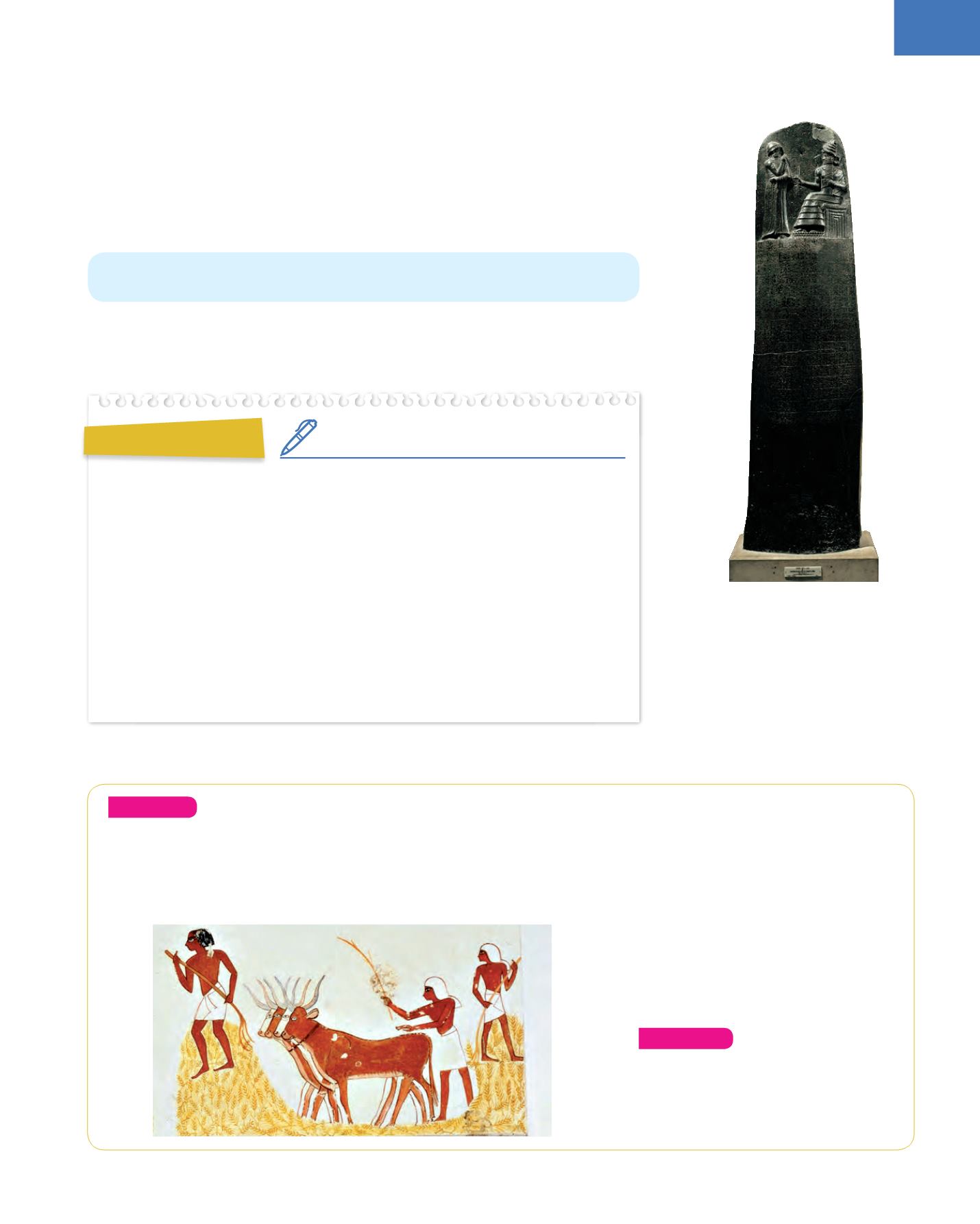
3
3. The first civilisations
49
1.3. The earliest laws
Occasionally, conflicts between people resulted in violence. Some powerful people
also abused their power, causing the people to rebel against them. To stop this, the
kings in Mesopotamia and the pharaohs in Egypt created laws with the help of their
government officials. They displayed the written laws in public places so they would
be known and obeyed by everyone.
The code was very strict because it was based on the principle of ‘an eye for an eye,
a tooth for a tooth’.
Did you know?
The Code of Hammurabi had 282 laws. These are some of them:
❚
Law 196: If a free man takes out the eye of the son of a free man, his eye will
be taken out.
❚
Law 198: If he takes out the eye or breaks the bone of a free man, he will pay
him one mine of silver.
❚
Law 199: If he takes out the eye or breaks the bone of the slave of a free
man, he will pay him half his value.
❚
Law 229: If a builder constructs a house which collapses and kills the owner,
he will be sentenced to death.
In the code, a ‘free man’ refers to the privileged, who didn’t have to work for
others. A ‘mine’ is an ancient unit of currency.
The Code of Hammurabi was written on
stone block called a stele. At the top,
there is an image of the Babylonian king
Hammurabi standing before Shamash,
the Mesopotamian god of justice, who
is sitting on his throne. Hammurabi was
commissioned to write the laws for his
subjects.
The oldest surviving set of written laws is called the
Code of Hammurabi
(mid-18th century B.C.)
Analyse
4.
Which social group do the following people belong to: a general, a
merchant, a miner, a big landowner’s son, a slave’s wife?
5.
Identify the social group that appears in this picture and explain what
you know about it.
6.
Why were written laws created
by early civilisations?
7.
What is the Code of Hammurabi?
Were people punished according
to the type of crime they had
committed? What other factor
did the punishment depend on?
8.
What does the term ‘an eye
for an eye, a tooth for a tooth’
mean? Do today’s laws follow
this principle?
Evaluate
9.
Do you think the creation of a
written code made everyone
equal in the eyes of the law?
Discuss.


